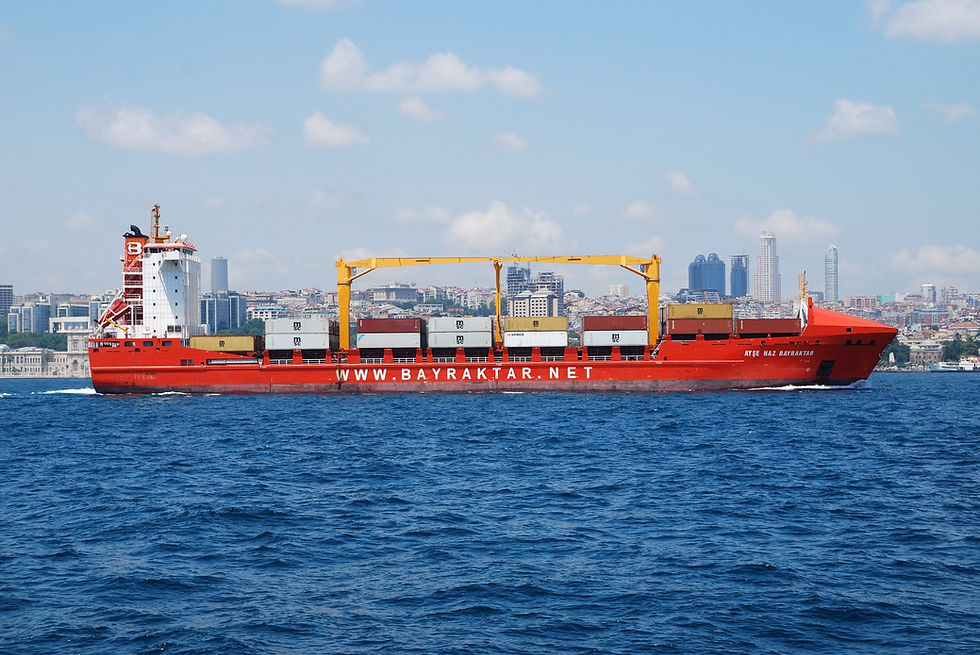The 2025 Fuel Market
- Dinko Tudor

- Jun 28
- 4 min read
EN590, Jet Fuel A1, Diesel, and the Impact of the Iran Conflict

The global energy market has always been a complex and dynamic ecosystem, influenced by geopolitical events, supply-demand fluctuations, and evolving regulations. As we enter 2025, the fuel market—particularly EN590 diesel, Jet Fuel A1, and other petroleum products—faces significant challenges and opportunities shaped by the ongoing conflict in Iran. This blog explores the current state of the fuel market, the implications of the Iran crisis, and the potential opportunities for stakeholders navigating these turbulent times.
The Current Landscape of the Fuel Market
In 2025, EN590 diesel, Jet Fuel A1, and other refined petroleum products remain critical to the global economy. EN590 diesel is widely used in transportation, agriculture, and industry due to its efficiency and lower sulfur content. Jet Fuel A1 powers the aviation sector, which is gradually recovering from the disruptions caused by the pandemic earlier this decade. Both fuels are essential to maintaining global trade and connectivity.
However, the fuel market has been under pressure from multiple fronts. The ongoing energy transition toward renewable sources has led to stricter regulations on fossil fuels. Meanwhile, geopolitical tensions, particularly in the Middle East, continue to create uncertainty in supply chains and price volatility.
The Impact of the Iran Conflict
The conflict in Iran has emerged as one of the most significant disruptors to the fuel market in 2025. As a major oil producer and exporter, Iran plays a crucial role in global energy supply. However, escalating tensions in the region have led to several key challenges:
1. Supply Chain Disruptions
The conflict has caused disruptions to oil production and exports from Iran. Key infrastructure such as refineries, pipelines, and shipping routes has been affected, leading to reduced availability of crude oil and refined products like EN590 diesel and Jet Fuel A1.
2. Price Volatility
With reduced supply from Iran and heightened geopolitical risks, global oil prices have surged. The price of Brent crude has consistently hovered above $100 per barrel this year, driving up costs for downstream products such as diesel and jet fuel. This has put pressure on industries reliant on these fuels, including transportation and aviation.
3. Regional Instability
The conflict has also heightened instability across the Middle East, a region responsible for a significant portion of global oil production. Neighboring countries have faced disruptions in their own operations due to security concerns, further tightening global supply.
Opportunities Amidst Challenges
While the Iran conflict presents significant challenges, it also creates opportunities for innovation and strategic adaptation within the fuel market. Here are some key areas where stakeholders can capitalize on current trends:
1. Diversification of Supply Sources*
Countries and companies are increasingly looking to diversify their energy supply chains to reduce dependence on Middle Eastern oil. This has created opportunities for other oil-producing regions such as North America, Africa, and Southeast Asia to expand their market share. Investments in infrastructure and exploration in these regions could help stabilize global supply.
2. Alternative Fuels and Renewable Energy
The rising costs of traditional fuels like EN590 diesel and Jet Fuel A1 have accelerated interest in alternative energy sources. Biofuels, synthetic fuels, and hydrogen are gaining traction as viable substitutes. Companies investing in research and development for these alternatives are poised to benefit from growing demand.
3. Technological Advancements
The current crisis has underscored the importance of efficiency and cost-saving technologies in fuel production and consumption. Innovations in refining processes, fuel additives, and engine technologies can help reduce costs and emissions, providing a competitive edge in a challenging market.
4. Strategic Stockpiling
Governments and businesses are increasingly focusing on strategic fuel reserves to mitigate supply disruptions. Companies involved in storage infrastructure or trading of refined products may see increased demand for their services.
How Industries Are Adapting
Industries reliant on EN590 diesel and Jet Fuel A1 have had to adapt quickly to the volatile market conditions. Here's how some key sectors are responding:
- Transportation: Logistics companies are optimizing routes and investing in fuel-efficient vehicles to manage rising diesel costs. Some are also exploring electrification for short-haul operations.
- Aviation: Airlines are implementing fuel hedging strategies to protect against price spikes in Jet Fuel A1. Additionally, there is increased investment in sustainable aviation fuels (SAF) as a long-term solution.
- Energy Trading: Traders are leveraging advanced analytics to predict price movements and identify profitable opportunities in a volatile market.
Looking Ahead: The Future of the Fuel Market
As we move further into 2025, the fuel market will continue to be shaped by a combination of geopolitical events, technological advancements, and environmental considerations. The conflict in Iran serves as a stark reminder of the vulnerabilities inherent in a fossil fuel-dependent world. However, it also highlights the resilience of markets and their ability to adapt to changing circumstances.
For businesses operating within this space, the key to success lies in agility and forward-thinking strategies. Diversifying supply chains, investing in innovation, and embracing sustainability will not only mitigate risks but also unlock new growth opportunities.
The road ahead may be uncertain, but with careful planning and strategic execution, stakeholders in the fuel market can navigate these challenges and emerge stronger than ever.
---
In conclusion, while the Iran conflict has undoubtedly disrupted the global fuel market in 2025, it has also catalyzed important shifts toward diversification, innovation, and sustainability. By staying informed and proactive, businesses can turn these challenges into opportunities for long-term success.
Global Diesel Market Outlook 2025–2033 – Global Growth Insights Covers EN590 diesel market size, pricing trends, and regional demand projections.
Jet A1 Fuel Prices & Market Trends – Global Fuel Terminal Offers current Jet Fuel A1 pricing, regional variations, and geopolitical influences.
Jet Fuel Price Monitor – IATA Weekly updates on global jet fuel prices and aviation fuel trends.





Comments